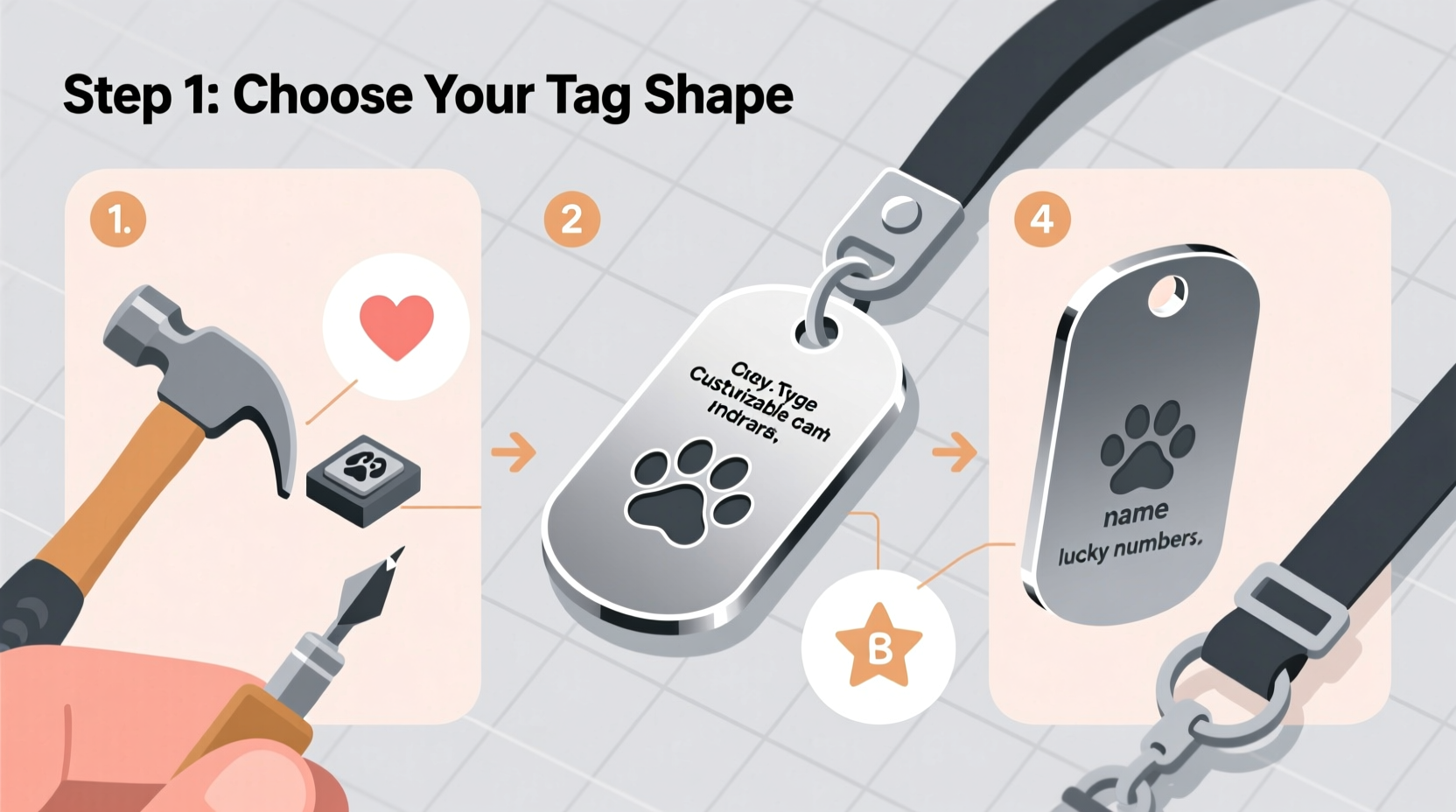Dog tags have evolved from military identification tools into meaningful accessories worn daily for style, identity, or remembrance. Whether you're honoring a loved one, expressing personal values, or simply adding a rugged touch to your outfit, customizing your own dog tag offers both practicality and emotional significance. With the right approach, you can assemble a durable, personalized piece that withstands daily wear while reflecting your individuality.
Understanding Dog Tags: Purpose and Personalization

Originally issued to military personnel for identification, modern dog tags are embraced by civilians for symbolic and aesthetic reasons. They’re commonly made from stainless steel, titanium, or aluminum—metals chosen for their resistance to corrosion and ability to hold fine engravings. Today’s versions often feature names, mottos, medical information, or inspirational quotes.
Customization transforms a simple metal disc into a wearable narrative. Unlike mass-produced jewelry, a hand-assembled dog tag allows complete control over design, material, chain type, and message. This level of personal involvement ensures the final product resonates deeply with its wearer.
“Personalized dog tags bridge function and sentiment—they’re not just accessories, but artifacts of identity.” — Jordan Lin, Industrial Designer & Wearable Art Specialist
Materials and Tools You’ll Need
Before beginning assembly, gather all necessary components. Choosing high-quality materials ensures longevity and comfort during daily use.
Essential Components
- Metal blank tags: Stainless steel is ideal for durability and hypoallergenic properties.
- Chain or paracord: Ballistic nylon cord, leather strap, or stainless steel ball chain (18–24 inches).
- Split rings or quick-release clasps: For attaching the tag securely.
- Engraving tool or service: Handheld rotary tool, laser engraver, or professional engraving provider.
- Safety gear: Gloves, eye protection, and a well-ventilated workspace if engraving at home.
Optional Enhancements
- Second tag for layered looks
- Protective coating (e.g., clear enamel) to preserve engravings
- Color fill in engraved text using paint pens designed for metal
Step-by-Step Assembly Process
Follow this detailed sequence to create a professional-grade dog tag ready for everyday carry.
- Select and prepare your tag blanks. Choose two identical 1.25” x 2” tags unless going for an asymmetrical design. Lightly sand edges with 400-grit paper to remove burrs.
- Design your message. Use software like Adobe Illustrator or free tools such as Inkscape to layout text. Keep fonts legible—block sans-serif styles work best on small surfaces.
- Engrave your tag. If using a Dremel-style tool, secure the tag in a vise with soft jaws. Trace your design lightly with a scribe first. Apply steady pressure and move slowly to avoid overheating the metal.
- Clean after engraving. Wipe away metal dust with isopropyl alcohol. Inspect depth and clarity—rework any faint areas.
- Add color fill (optional). Use a fine-tip metallic paint pen (e.g., black or red). Let dry completely, then wipe excess off the surface with a lint-free cloth.
- Attach split ring. Open the ring slightly using pliers, thread through the tag’s hole, then loop it through the chain before closing securely.
- Test fit and adjust length. Wear the tag around your neck to check comfort. Trim paracord or request custom chain lengths from suppliers if needed.
Design Considerations and Common Mistakes
Effective customization balances aesthetics with readability and comfort. Avoid overcrowding the tag surface—less is often more when it comes to impactful messaging.
| Do’s | Don’ts |
|---|---|
| Use uppercase letters for maximum legibility | Include overly long messages (>2 lines per side) |
| Round corners slightly to prevent snagging | Choose thin chains under 1.5mm thickness—they break easily |
| Add a second tag with coordinates, blood type, or QR code linking to emergency info | Engrave near the edge where text may wear off faster |
| Use military-style numbering format (e.g., “A+”, “RH+”) for medical tags | Forget to proofread spelling and dates |
Real Example: A Veteran’s Tribute Tag
Mark R., a former Army medic, created a dual-tag set: one inscribed with his name, blood type, and allergies; the second engraved with “In Memory of PFC Elias Torres – Kandahar, 2012.” He used a matte black paracord necklace with a magnetic clasp for easy removal. The result was both functional and emotionally grounding—a daily reminder of service and sacrifice.
FAQ: Common Questions About Custom Dog Tags
Can I wash my dog tag regularly?
Yes. Clean with mild soap and water every few weeks. Dry thoroughly to prevent moisture buildup, especially if worn during workouts or in humid climates.
Are there legal restrictions on what I can engrave?
No federal laws restrict civilian dog tag content, but avoid impersonating military personnel (e.g., using official unit insignias without authorization). Stick to personal identifiers, mottos, or tributes.
How do I make my tag stand out without being flashy?
Consider texture over shine. Brushed or bead-blasted finishes offer subtle distinction. Engraved patterns like wave textures or geometric borders add visual interest without glare.
Checklist: Assembling Your Everyday Dog Tag
- ☐ Choose durable metal tag (stainless steel recommended)
- ☐ Finalize engraving text and layout
- ☐ Engrave or order professionally
- ☐ Sand sharp edges and clean surface
- ☐ Optional: Apply color fill and sealant
- ☐ Select appropriate chain or cord (minimum 2mm thickness)
- ☐ Attach tag securely with split ring or clasp
- ☐ Test wearability and adjust length
- ☐ Perform monthly inspection for wear or loosening
Final Thoughts: Wear It With Meaning
A custom dog tag is more than a fashion statement—it’s a piece of personal history you carry forward. Whether commemorating a journey, declaring resilience, or serving as a medical alert, each element you choose contributes to its significance. By investing time in thoughtful design and careful assembly, you ensure your dog tag endures not only physically but emotionally.
Start small: pick one message that matters, select quality materials, and build from there. Over time, your collection can grow into a curated expression of who you are—and who you’ve been through.









 浙公网安备
33010002000092号
浙公网安备
33010002000092号 浙B2-20120091-4
浙B2-20120091-4
Comments
No comments yet. Why don't you start the discussion?